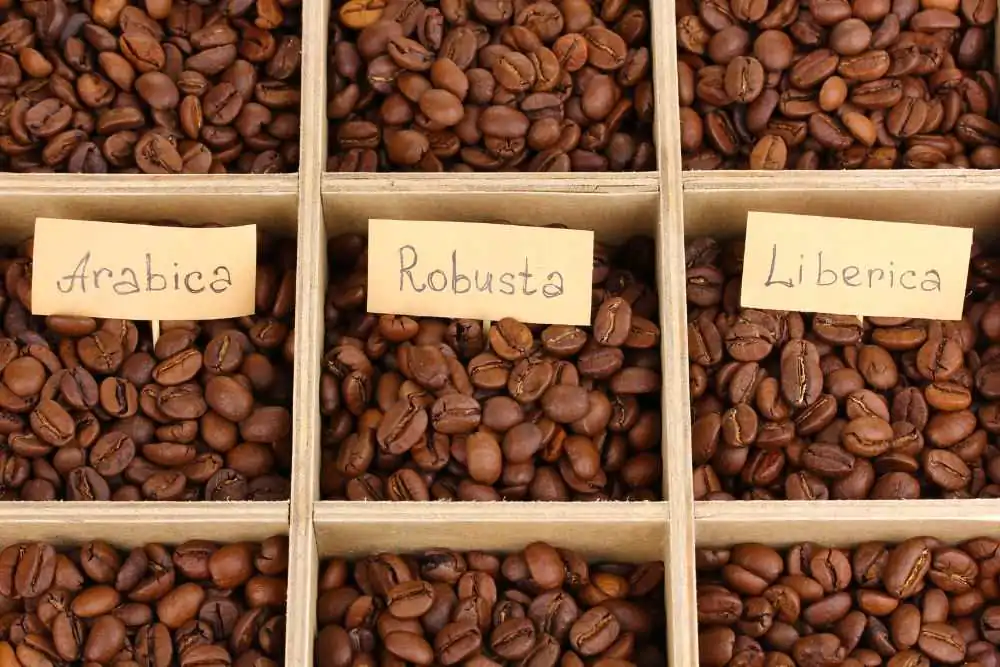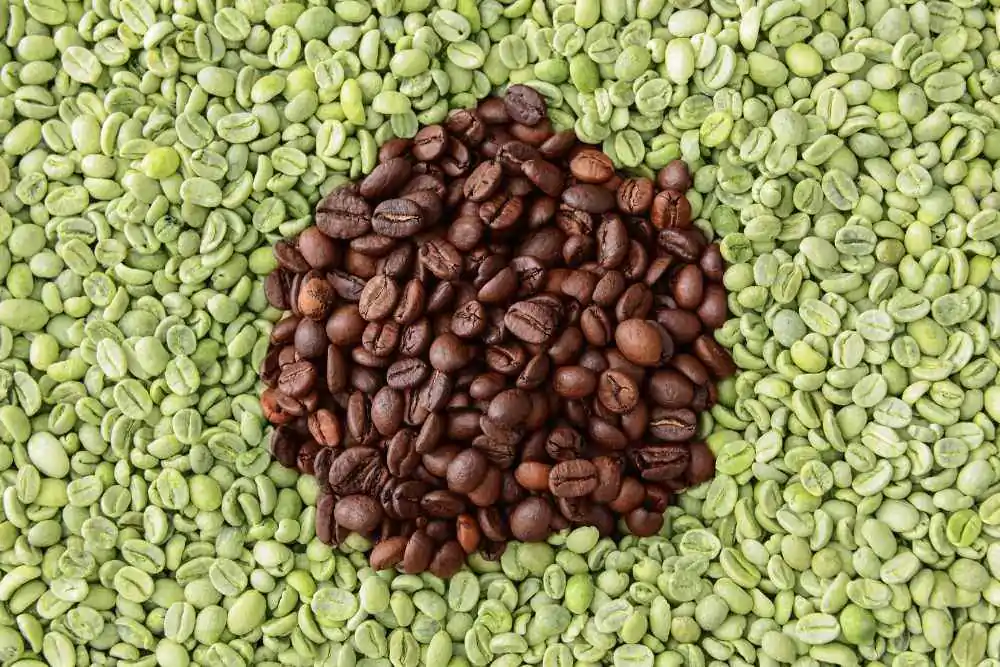Have you ever wondered, “Where do coffee beans come from?” From farm to cup, we will take a look at the journey your coffee beans have to embark on to reach you.

Coffee beans are processed from coffee cherries that grow on the Coffea tree. This is a tree that is grown and cultivated in an area referred to as ‘the coffee belt’ or ‘the bean belt.’
Of course, we feel that telling you that coffee beans come from the Coffea tree is short-changing you, especially when your coffee beans’ origin story is so much more interesting than that. Whether you are drinking a fancy cup of espresso or a no-frills instant coffee, your coffee’s journey from farm to cup has been a long one, and it is a story that deserves to be told.
The History of Coffee And Its Cultural Importance
According to legend, coffee’s wonderful traits were discovered long ago when a goat herder in Ethiopia noticed his goats acted oddly after eating cherries from the Coffea tree.
Legend states that the goat herder considered the berries a magic fruit and shared them with his monk friend, who said the berries helped him maintain prayer vigils throughout the night.
Obviously overcome with the berries’ ‘magic,’ that monk then tried to burn the beans in a fire, only to learn that they created a delicious aroma when roasting over the open flames. From there, coffee’s amazing traits were known.
Whether this story is true or not is up for debate, but it makes for an interesting tale that’s been recounted for generations. If you are looking for a more research-based answer to where the cup of brew you are drinking comes from in a historical context, then it’s worth looking at how the drink spread across the globe.
Coffee beans first arrived in the Middle East in the 15th century. The beans entered the area through the port of Mocha. From there, plants were cultivated in Yemen, Persia, Turkey, and Egypt.
However, the product hadn’t gained the moniker of ‘coffee’ just yet. Instead, it was called the ‘wine of Araby.’ Read our Middle Eastern coffee history guide. Italy and the Netherlands were the first Western European countries to embrace the brew.
Coffee arrived in Venice around 1570. From there, coffee shops began to pop up all over the country. Read our guide to Italian coffee history.
The Dutch brought it with them to Java, where it was grown and processed in the 1600s, and word of coffee’s fantastic taste and stimulating effects began to spread. Coffee exports from that country eventually became so popular that the words ‘Java’ and ‘coffee’ became synonyms.
Around the early 1700s, coffee also started to become popular across the Atlantic Ocean, with it soon being produced in South America, Central America, and the Caribbean.
Eventually, coffee came to North America and the United States. It should surprise nobody to learn that the Boston Tea Party and subsequent revolution were a big part of how coffee became so popular in the new country. As tea was the preferred drink of the British, it became highly unpatriotic to drink it.
It was quickly replaced by coffee as the preferred caffeinated beverage of the American population.
Coffee Bean Growing Regions
You might be reading this article, thinking, ‘Yes, the story of the goats is all well and good, but where does this cup of coffee I am drinking RIGHT NOW come from geographically?’
In short, in all likelihood, your coffee comes from a place referred to as “the bean belt” or “the coffee belt.” This is an area between the Tropics of Cancer and Capricorn where Coffea plants thrive because of the favorable growing conditions.
This area covers parts of South America, Africa, and Southeast Asia. Thus, the ground beans in your delicious morning coffee likely come from one of those areas.
Coffea trees only survive in specific soils and climates, hence why they do well in tropical regions with lots of rainfall and mild winters. The coffee tree cannot survive when temperatures drop below 41°F, but it still needs a lot of moisture to grow.
The Coffea tree, or coffee tree (also sometimes referred to as the coffee plant), can grow up to six feet in height (1.8m) and produces roughly ten pounds of coffee cherries a season.
The coffee cherries are those magical little red seeds that the goat herder’s flock was so fond of. Those cherries are harvested, processed, and roasted before they reach your kitchen counter.
Different Types of Beans

There are actually multiple varietals of coffee trees. The two most common are Coffea arabica and Coffea canephora (also called Robusta coffee). While both varietals produce coffee beans, the caffeine content, and flavor slightly differ.
If you still don’t know where your coffee beans come from (of course, you can always look at the beans’ packaging!), then the type of coffee you made your brew with might narrow it down.
That is because the Coffea arabica and the Coffea canephora require different circumstances to thrive, with specific regions specializing in one or the other. Even within the categories of the two different types of coffee, it is thought that there are subtle differences in flavor depending on the country they are produced.
This is backed up by the world’s largest seller of takeaway coffee, Starbucks. They state: “Where coffee comes from – its origin – makes a difference to its flavor. It’s like wine or tea. A region’s soil, climate, and other conditions all impact how your coffee tastes.”
Of course, some of the best coffee out there (such as Lavazza’s Quality Rossa) is a mixture of the two – so it’s worth noting that the above logic is useless in the case of coffee blends.
Arabica Coffee Beans
The Coffea arabica tree grows best at a temperature ranging from 65°–70°F on elevations in tropical countries. Brazil is the country that produces the most Arabica coffee in the world. The South American country also produces Robusta, but it’s its Arabica it is famous for.
Other countries that are coffee producers of this type of coffee plant include Ethiopia, Guatemala, Colombia, and Indonesia.
Robusta Coffee Beans
The Robusta plant is considered more robust than its Arabica alternative and grows best in areas with temperatures of about 80 degrees and annual rainfall amounts of more than 60 inches.
Robusta coffee beans are prized for their high caffeine content; however, many consider these coffee beans lacking in the complex flavors of Arabica beans.
The countries that have large amounts of growers of Robusta coffee beans include Vietnam, Indonesia, India, Uganda, Kenya, and Congo. Robusta beans are often used for espressos, as they produce that beautiful crema (the excellent creamy layer found on top of an espresso shot).
How Are Coffee Beans Harvested?
The journey of your coffee bean from farm to cup starts with the coffee cherries being picked by either hand or machine. The latter generally happens in areas where the terrain is relatively flat.
These cherries are harvested one of two ways; strip-picked or selectively picked.
Strip picking is a type of harvesting where all the cherries are stripped from the branch at once.
Selective picking costs more and is also more labor-intensive for coffee farmers. It is the method most closely associated with harvesting finer Arabica beans. It is where only the ripe cherries are picked.
After the cherries have been removed from the plants, they are placed in one of two categories for coffee processing. The following are the methods used for turning the fruit from the Coffea tree (the coffee cherries) into coffee beans. Learn more about how coffee is harvested.
The Dry Method
The dry method of coffee processing is where the freshly picked coffee cherries are spread out and placed in the sun. From there, they dry naturally, with harvesters regularly rotating the beans throughout the day. This is to ensure they dry evenly.
This process can continue for several weeks for each batch of coffee, as the aim is to reduce the moisture content of the cherries significantly. After they dry, the cherries are sent for hulling, sorting, grading, and bagging.
The Wet Method
The main difference between the wet and dry processing methods is that the wet method removes the pulp of the coffee cherry. A machine separates the flesh and the skin of the coffee fruit from the coffee bean and the parchment layer of the bean.
The beans are placed in fermentation tanks to ensure all the pulp is removed after the automated machine stage, where pulp residue is broken down and easily rinsed away. The beans are then put in clean water tanks before being dried. After which, they are sorted and bagged.
Roasting Beans: A Magical Transformation

That’s not where the production of high-quality beans ends.
Green coffee beans are then shipped to coffee roasters. There, they will be cleaned once again before going through the roasting process.
They are then roasted from 180 ° C to 250 ° C. Here; the green beans transform into the deep, brown beans we are accustomed to. This browning process is known as the ‘Maillard reaction,’ and it affects the beans’ flavor, smell, and texture.
Roasted coffee beans fall under three different roast profiles; light, medium, and dark. The roast profile indicates the temperature at which the beans are roasted (light being the coolest and dark the hottest), with each roast profile having distinctive tastes and characteristics depending on the type of coffee beans.
Coffee Growing: From Farm To Cup
Whether you’re drinking coffee from Latin America, Southeast Asia, or Africa, it’s good to know the process of how it reaches your cup. Recognizing the different stages involved and the amount of work that goes into the brew can build an even deeper appreciation.
FAQs About Where Do Coffee Beans Come From
Where does Starbucks source its coffee?
Starbucks sources its coffee from over 30 different coffee-producing countries throughout the globe. Each one of these countries is in the ‘coffee belt.’ According to Starbucks’ website, they buy more coffee from Latin America than any other region because “of its consistent taste and quality.”
They added that coffee from this region has “delicious notes of nuts, cocoa, and soft spice.”
How many cups of coffee are consumed in the US per day?
Americans drink approximately 517 million cups of coffee each day, according to a National Coffee Data Trends (NCDT) report.
Other research from Statista revealed that coffee drinkers in the U.S. rarely stick to just one cup a day, with almost 80 percent of coffee drinkers drinking two or more cups while at home on a weekday. Those statistics also revealed that just 20 percent consume takeaway coffee daily.
